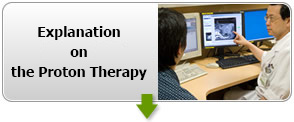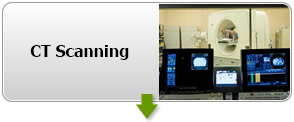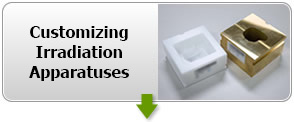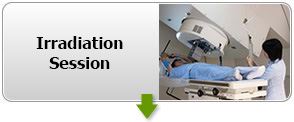 |
Conditions of patient and tumor are carefully examined before medical conferences, where the chief doctor and all of the relevant departments discuss thoroughly on whether the case is applicable for proton therapy or whether there are other options, before reaching a decision. |
 |
Once a decision is made for the proton therapy, all the information including what is being done, what is being expected as a result, and any possible side effects, is given to patient and his/her family. |
 |
Before starting preparation for the proton therapy, an experienced radiotherapy nurse gives patient and his/her family close explanations regarding the flow of therapy, cautions for daily life during the therapy, etc. |
 |
A fixator, which should fit with patient’s body and location of tumor, is customized so that the patient is fixed to let proton beams target precisely at the tumor. The picture shows an example of a fixator for the therapy in the head and neck area. |
 |
Patient gets a CT scan while being fixed with a fixator customized for him/her. The images gained by the scanning provide sources for making a detailed therapy plan. |
 |
In addition to images obtained by CT scanning, those by MRI and PET scanning are added to thefile on a computer, which is for therapy planning only, to give close data on the targeted tumor and surrounding organs. |
 |
Irradiation apparatuses such as “collimater” and “porous” are customized in accordance with the therapy plan. “Collimater” trims extra beam in order to get it distributed at the precise size and shape of the tumor, while “porous” is used for adjusting the depth where proton beams stop and stay. |
 |
Quantity and range of the distributed proton beams are measured beforehand with the irradiation apparatuses customized for each patient. The results are thoroughly examined to see if there is any discrepancy from the therapy plan. |
 |
Angle of irradiation and number of sessions vary depending on each patient. At every session, a proton beam is distributed after X-raying the spot to make it sure that it’s precise. Duration time required for each session also varies depending on patient, but in general, it takes from 10 to 40 minutes including the first procedure of focal position check and the irradiation itself. |
 |
After the proton therapy, patient is followed closely at the SCC or the medical institution which originally referred him/her. Effects of the therapy are evaluated at appropriate timings with diagnostic images and blood tests. |